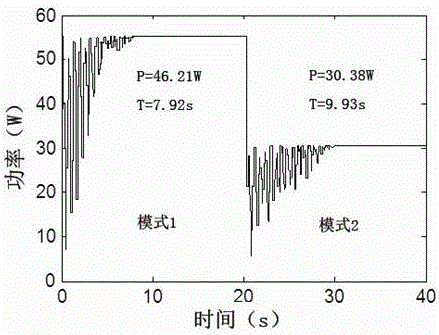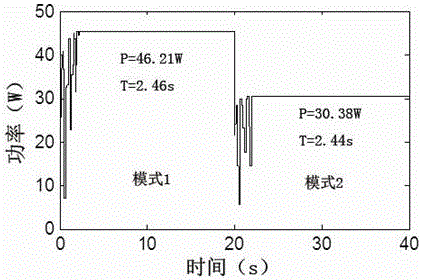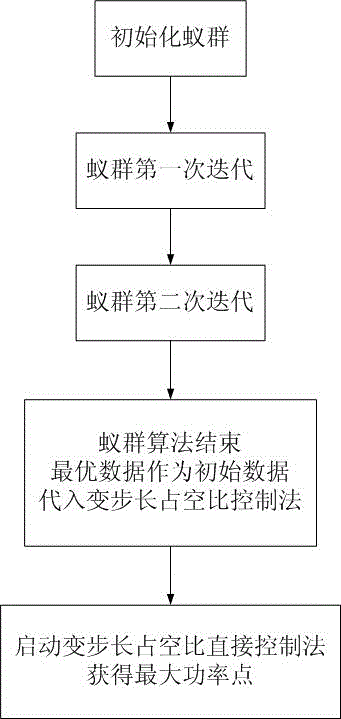MPPT method of photovoltaic system based on ant colony optimization and variable step size disturbance observation algorithms
A variable step size perturbation and photovoltaic system technology, applied in the field of photovoltaic systems, can solve problems such as slow convergence, large amount of calculation, and long convergence time
- Summary
- Abstract
- Description
- Claims
- Application Information
AI Technical Summary
Problems solved by technology
Method used
Image
Examples
Embodiment Construction
[0035] The present invention will be further introduced below in conjunction with the accompanying drawings and application examples.
[0036] like image 3 and Figure 4 As shown, a photovoltaic system MPPT method based on ant colony optimization and variable step size perturbation and observation algorithm includes the following steps:
[0037] Step 1, determine ant colony scale i and motion step length; In the present embodiment, the quantity of ant colony scale i is 9, and n is 60, according to Get the initial motion step size δ 0 is 0.06, the first iteration motion step size δ 1 0.06e -1 , the second iteration motion step size δ 2 0.06e -2 .
[0038] Step 2. Determine the initial position of the ant colony; the initial position of the ant colony is positioned between 0.1 and 0.9, and the ant colony is positioned at 0.1, 0.2, 0.3, 0.4, 0.5, 0.6, 0.7, 0.8, 0.9. The area is evenly divided into 8 parts.
[0039] Step 3. Collect the output voltage U of the photovolta...
PUM
 Login to View More
Login to View More Abstract
Description
Claims
Application Information
 Login to View More
Login to View More - R&D
- Intellectual Property
- Life Sciences
- Materials
- Tech Scout
- Unparalleled Data Quality
- Higher Quality Content
- 60% Fewer Hallucinations
Browse by: Latest US Patents, China's latest patents, Technical Efficacy Thesaurus, Application Domain, Technology Topic, Popular Technical Reports.
© 2025 PatSnap. All rights reserved.Legal|Privacy policy|Modern Slavery Act Transparency Statement|Sitemap|About US| Contact US: help@patsnap.com



